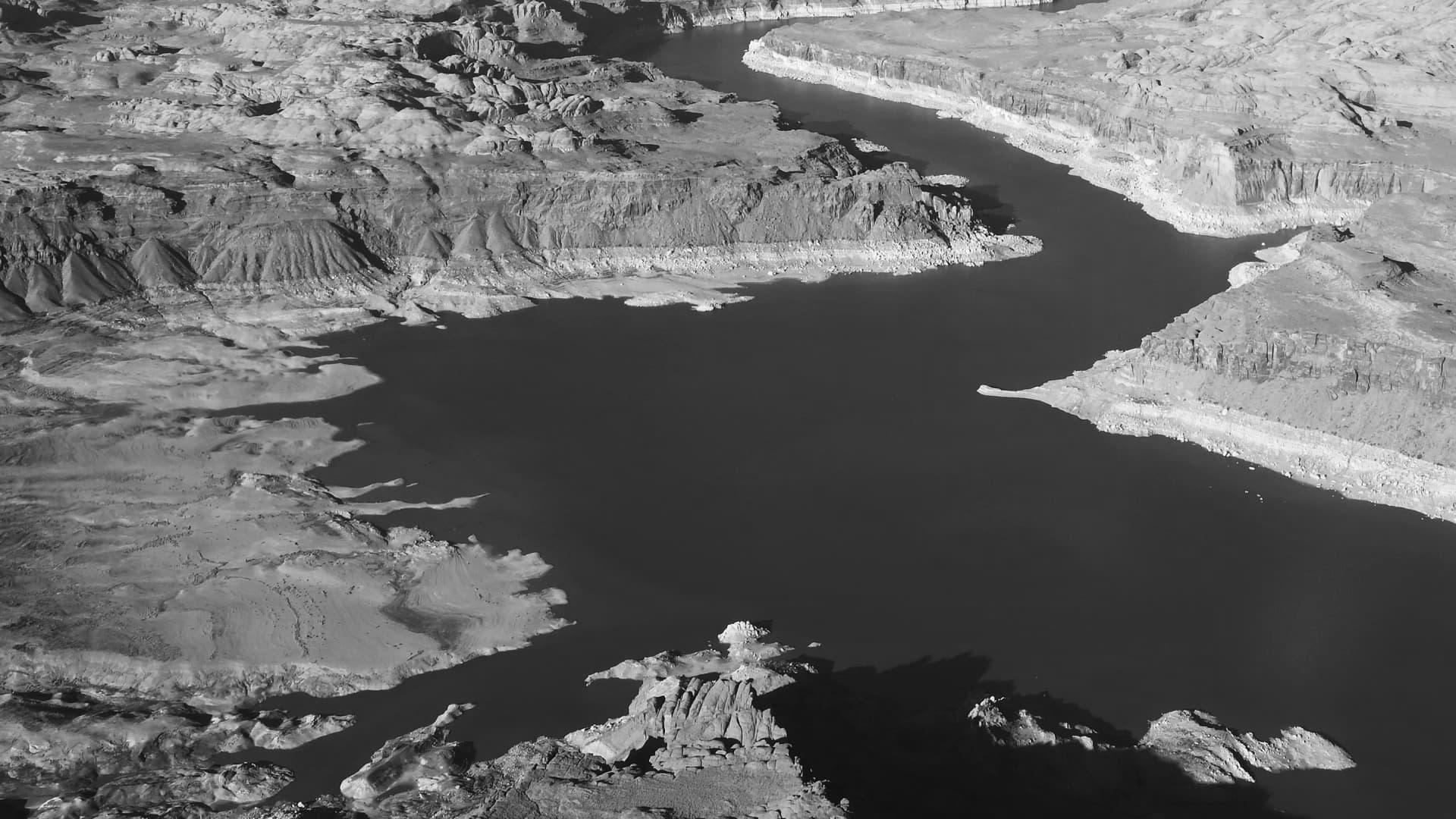Lake Powell Glen Canyon Dam water release delayed as a result of drought
Warning: Undefined variable $post_id in /home/webpages/lima-city/booktips/wordpress_de-2022-03-17-33f52d/wp-content/themes/fast-press/single.php on line 26

2022-05-05 01:59:17
#Lake #Powell #Glen #Canyon #Dam #water #release #delayed #due #drought
Water ranges are at a historic low at Lake Powell on April 5, 2022 in Page, Arizona.
Rj Sangosti| Medianews Group | The Denver Put up via Getty Photographs
The federal government on Tuesday announced it would delay the discharge of water from one of many Colorado River's main reservoirs, an unprecedented motion that can temporarily tackle declining reservoir levels fueled by the historic Western drought.
The decision will preserve extra water in Lake Powell, the reservoir situated at the Glen Canyon Dam in northern Arizona, as a substitute of releasing it downstream to Lake Mead, the river's different major reservoir.
The actions come as water levels at each reservoirs reached their lowest levels on record. Lake Powell's water level is at the moment at an elevation of three,523 toes. If the level drops below 3,490 toes, the so-called minimal power pool, the Glen Canyon Dam, which supplies electricity for about 5.8 million prospects in the inland West, will not be capable to generate electrical energy.
The delay is expected to guard operations at the dam for subsequent 12 months, officials stated throughout a press briefing on Tuesday, and will keep practically 500,000 acre-feet of water in Lake Powell. Under a separate plan, officials may also launch about 500,000 acre-feet of water into Lake Powell from Flaming Gorge, a reservoir located upstream on the Utah-Wyoming border.
Officials mentioned the actions will assist save water, defend the dam's potential to supply hydropower and provide officials with more time to determine methods to function the dam at decrease water levels.
"We have now never taken this step before in the Colorado Basin," assistant Inside Department secretary Tanya Trujillo informed reporters on Tuesday. "However the conditions we see immediately, and what we see on the horizon, demand that we take immediate motion."
Federal officials final yr ordered the first-ever water cuts for the Colorado River Basin, which provides water to greater than 40 million people and a few 2.5 million acres of croplands within the West. The cuts have principally affected farmers in Arizona, who use nearly three-quarters of the available water supply to irrigate their crops.
In April, federal water managers warned the seven states that draw from the Colorado River that the government was considering taking emergency action to deal with declining water levels at Lake Powell.
Later that month, representatives from the states despatched a letter to the Interior agreeing with the proposal and requesting that non permanent reductions in releases from Lake Powell be applied with out triggering additional water cuts in any of the states.
The megadrought within the western U.S. has fueled the driest 20 years within the region in no less than 1,200 years, with conditions more likely to continue by way of 2022 and persist for years. Researchers have estimated that 42% of the drought's severity is attributable to human-caused climate change.
"Our climate is altering, our actions are accountable for that, and we now have to take responsible action to respond," Trujillo mentioned. "We all need to work together to guard the sources we've and the declining water supplies in the Colorado River that our communities rely on."
Quelle: www.cnbc.com